The server is down. A computer has a virus in the office. You have ten deadlines to hit to meet your boss’ expectations. Just to name a few. Many IT professionals feel like they are on edge at all times and cannot find a moment to unplug even when on vacation. Lifestyle diseases are more common among IT professionals than any other field. Overeating, sleep deficit, alcohol use and more are just a few health care issues that are prevalent in the IT industry.
Job Stress can lead to burnout and turnover, costing IT organizations countless dollars in replacement costs, and making methods for measuring and minimizing stress a business benefit.
A recent survey done by Careercast, lists these as the top 10 most stressful jobs in Tech:
- CIO’s – Often have to be available at all times and motivating their team is on the top of their priority list.
- IT Procurement Specialists– Tight schedules and working around client’s needs often result in high levels of stress.
- IT Managers and Directors– 24% of most IT Managers/Directors work more than 50+ hours a week. They do not work a typical 9 – 5 job when maintenance updates and migrations often occur after hours or on the weekends.
- Operation Specialists– Work on tight deadlines and need to troubleshoot problems at all hours. Any mistakes they make can impact a whole company’s access to data.
- Software Engineers– Demand for this job is in high demand and is expected to grow by 17% by 2024. A lack of talent in this position adds more pressure for these jobs.
- Application/Software Developers– Around one-third of developers surveyed reported they do not have sufficient time to do quality work. Over a quarter couldn’t plan tasks because of time limitations.
- Database Manager– Tight deadlines, multi-tasking, constant pressure are just a few of the demands of this job.
- Web Developer– Job growth for this position is 27% by 2024. Skyrocket demand adds to the pressure.
- Network Administrator– Demand is on the rise as businesses invest in better systems. Need to often be available 24/7, multi-task and be an effective communicator with all staff.
- IT Security Specialists– This position often has to make decisions on the spot and frequently variables around them are things that they cannot control.
Reasons for Stress
Security and Email Specialist GFI, put together an infographic to show their results from a survey they did on the stress IT professionals experience.

How To Reduce Stress?
For most IT professionals, they truly enjoy their job and what they do. What can one do to alleviate some of the stress from their jobs. Here are a few suggestions from a neurobiologist and other professionals in the field.
- Just Breathe – It may seem simple enough but it does work when you concentrate on changing your breath. Deep breathing exercises, meditation and more can help induce a state of calm in your life.
- Take a Break – A majority of us spend our workday in front of a computer and most likely are dehydrated. Set a timer on your phone to take five minutes of every hour to get up and walk around, get a drink of water, etc.
- Set Your Priorities: Daily, make a list of the top three things that you want to accomplish that day. Prioritize your responsibilities by importance, size or deadline. Break larger tasks into smaller ones that are easier to accomplish. Cross things off your list at the end of the day to give you a sense of accomplishment.
- Delegate and use Time Efficiently: Distribute tasks amongst your team based on strengths. Determine when meetings are necessary and consider whether or not all parties are needed to be at a meeting.
- Make Time for Sleep: Remember when you used to take naps as a kid? Well, your body still needs it. Make sure you get in your z’s. Don’t sacrifice much needed sleep.
- Use Your Senses: In most offices, there is constant outside noise and distractions. Try to switch off the outside noise by using headphones, shutting your door or whatever works best for you. Is there a certain smell that puts you at ease? It’s been proven by studies that familiar smells can put a person at ease when they are experiencing high levels of stress.
- Minimize your screen time: This is probably the hardest thing for an IT Pro to do. Avoiding the thing that reminds you of work will hopefully allow you to relax and unwind. Anything that reminds you of work can trigger an emotional reaction of stress. Go for a walk, take up another hobby that does not remind you of work, or whatever that allows you to forget about the pressures from work.
- Be Grateful: When things get rough, it may be hard to be grateful. Take the time to make a gratitude list or start your day with a Post-It note of things that make you happy. It’s easy to get caught up on the things that are causing frustrations and pain in our life. A grateful and positive person often has less stress and attracts positivity around them.
- Use Your Vacation Hours: Americans are terrible at using their vacation time and taking a break from their jobs. In IT, it is hard to disconnect from work while on vacation. Even if its a staycation, take the time for you to not think about work or your responsibilities.
- Just Say No: If you are off the clock, on a break, at a social event, etc., you have the right to tell some that asks about an IT issue to say no. Set up boundaries in your life when you are off the clock.
- Invest in You – Spoil yourself and feel no shame. Take up a new hobby, a new outfit, workout, etc. Find those things that bring you joy. Put you first!
Reducing stress is easier said than done. The demand of new technology, rise in cyber attacks and security breaches, and digital transformation are just a few things that will be a part of IT professionals lives for years to come. HR Departments and CEO’s are realizing the demands put upon IT teams and are looking for ways to improve the lives of their employees.
Zunesis is here to help your business and IT departments with problems they may have that they cannot solve on their own. Our experienced professionals are here to help alleviate your stress. Contact us today to find out how we can help!
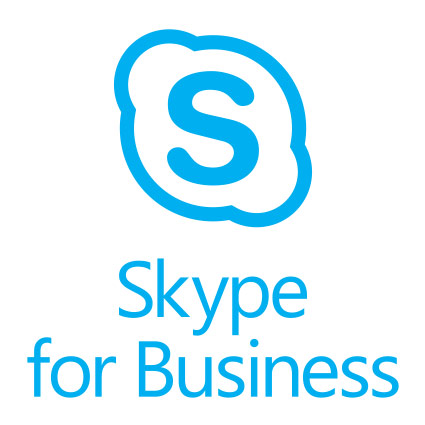 In April of 2015, Microsoft officially launched Skype for Business. Microsoft’s instant messaging and conferencing program has become more and more useful over the years, making it easier to do things like share documents, give presentations, and video chat.
In April of 2015, Microsoft officially launched Skype for Business. Microsoft’s instant messaging and conferencing program has become more and more useful over the years, making it easier to do things like share documents, give presentations, and video chat.
One benefit that more companies are using or looking into using is utilizing Skype to replace their business’ existing phone system. Zunesis moved their phone system to Skype last year and has only begun to use some of its functionalities.
How Does it Work?
Skype’s Cloud PBX system does almost everything a regular PBX system does, but it also integrates with Office 365, allowing you to do things like send voicemails as an email, eliminating the need to ever check voicemail again. It does everything a landline does, such as hold and transfer, but it also has many features landlines don’t have.
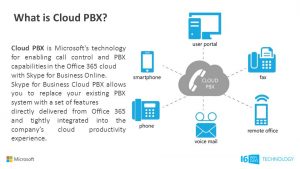
As part of the Office 356 suite, Skype centralizes all administration in the cloud. This simplifies all administrative tasks, and allows users to make and receive calls anywhere, as long as they have the Skype app running on their laptop or mobile device. No longer do employees need to be tethered to a desk phone during business hours, and in a world of increasing mobility, this is incredibly useful. You don’t even need to get new phone numbers to replace your current system, Skype allows you to port any phone numbers, allowing you to keep your business number. No need for new business cards, or any emails to customers telling them your phone number has changed.
Another perk of using Skype instead of a traditional phone line is the flexible subscriptions. You can add or subtract users as you go so you never have to pay for more than what you are using. You can set permissions by giving some users the ability to make international calls, while only allowing others to make domestic calls.
Skype integrates VOIP capabilities with instant messaging and conferencing, making it a great communications tool. One can send instant messages, screen share, or make calls all from the same place, using the same contacts. You can dial by name from any office 365 app, or use the traditional dialer in Skype, which is a welcome familiarity for many users. It also comes with 5 licenses per user, so you can make calls from any device.
Some other features include:
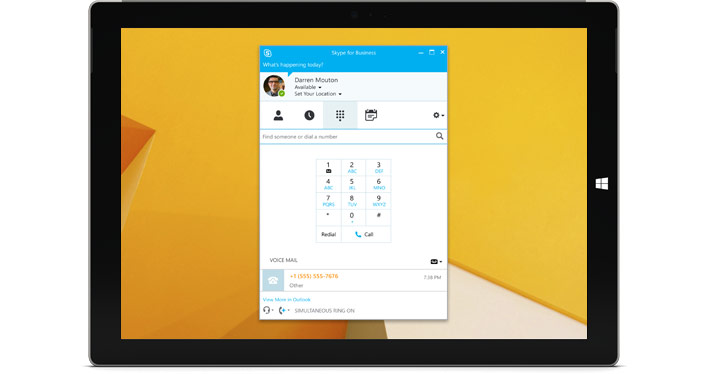 Enterprise calendar call routing: where you can enable or disable call forwarding by using your exchange calendar business hours.
Enterprise calendar call routing: where you can enable or disable call forwarding by using your exchange calendar business hours.
Do-not-disturb routing and call blocking: If you don’t want to be disturbed while you work on a big project, you can easily block calls except from those that you specifically indicate are ok to come through to you.
Device Switching or Transfer a Call to Another Person in your Office: Move from a headset to speakerphone with just a few clicks. Easily transfer calls to other people.
Caller ID, Call Waiting, Call Delegation, Call History and Call Forwarding: All tools available through Skype.
Support: Microsoft offers 24/7 support, so you never have to worry about phone lines going down. Anyone already using Office 365 should definitely be looking to replace their current phone systems with Skype. It offers so much for so little, costing around $8/user, it could end up saving your business money.
Additional Resources on Deployment, Licensing and Features of Skype Business Phone System:
- Set up Calling Plans: This article has step-by-step instructions to get set up with your phone numbers or to transfer your existing phone numbers to Skype for Business.
- Plan your Phone System in Office 365 (Cloud PBX) solution: This TechNet article lays out all of your deployment options. It also has information about planning an entirely cloud-only solution.
- Skype for Business and Microsoft Teams add-on licensing: Learn which licenses you need to buy to get the Phone System in Office 365.
- Set up Phone System voicemail – Admin help
- Discover Skype for Business: Help the people in your company learn how to use Skype for Business features.
As of September 2017, Microsoft announced that Microsoft Teams will replace Skype for Business and will add more functionality. The transition will occur over the next three years and Zunesis will keep you updated as further announcements are made.
If you are interested in learning more about using Skype for Business for your phone system, contact Zunesis for more information on how we can set up your company with licenses.
As the CEO of Zunesis, I am fond of saying “get beyond talking and PowerPoint slides and find some way to take action”. Everyone can talk a good game, but far fewer can actual design and implement successful IT solutions on-time and within budget. I feel like customers are tired of watching our lips flap and instead want IT Solution Providers to show them actual tangible value. It seems that all customers are from Missouri these days “the show me state”.
In 2015, Zunesis made the decision to invest heavily in a Technology Lab so we could show our clients and prospects actual infrastructure solutions, software solutions and management platforms. The ability to show technology working, instead of just talking about it, has been a big benefit to our clients. Building out a professional technology lab has been expensive, but the rewards stretch beyond just show and tell. The Lab has also proven beneficial to our Solution Architects who constantly use the Zunesis Lab to hone their skills on newer technology and test specific upgrade paths for software. The IT world is always changing and we want to make sure that we have tested specific technology and integration paths before we recommend them and before we go on site for an implementation.
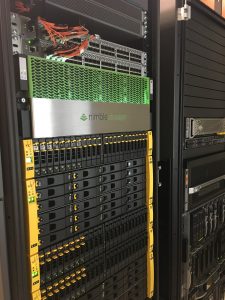
Zunesis – Technology Lab featuring Nimble Storage
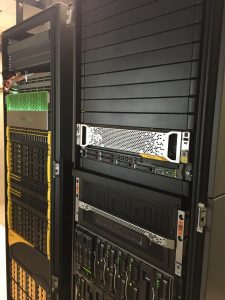
Zunesis Technology Lab
Zunesis has been a Platinum Partner with Hewlett Packard Enterprise (HPE) for 13+ years. As a result, most of the technology in our lab is HPE. Today we have 3 different 3Par Storage Arrays, a Nimble Array, a C7000 Chassis that includes a variety of HPE Servers (Generation 7, 8 and 9) and OneView for overall systems management. The Lab has several Brocade Fibre Channel Switches and Moonshot servers. Within the Lab, we run VMware and Veeam software and have connections to the Microsoft Cloud – Azure. In the coming months, we will be installing new technology in the Lab including:
- Simplivity 2 node
- HPE Gen10 servers
- Aruba switches top of rack
- Extreme network top of rack switches
In the not too distant future, we will replace the C7000 Chassis with an HPE Synergy frame.
Our plans are to continue to invest in our Lab so we can show clients and prospects the actual technology, instead of just talking about it. Furthermore, the Lab is another way we can invest in the on-going technical training and proficiency of our Solution Architects at Zunesis. If you would ever like to stop by for a technology demonstration or just to talk about what you are trying to accomplish in your business, Contact us and would be happy to have you come by for a visit.
From the wise words of Vanilla Ice, “If you got a problem, yo I’ll solve it.” Zunesis wants to help solve your IT problems for your business. Zunesis offers for all new clients an opportunity to work one-on-one with one of our Solutions Architects on a focused effort at NO COST. This is our Customer Connect Program. We hope to give you the opportunity to see what it’s like to work with Zunesis and provide real value to your company.
So how does our program work?
STOP

Take the time to choose a part of your IT infrastructure where you may need help. Do you need to assess a best practice compliance? Scope a project? Review an application or data availability? Or troubleshoot a problem? Zunesis is here to help with any area where you may need some extra help.
We cover the following Competencies:
- Microsoft (AD, Exchange, O365)
- Virtualization (VMWare, Hyper-V_
- Backup/Recovery
- Business Continuity/ Disaster Recovery
- HPE ISS
- Data Storage
- Networking
COLLABORATE
 After you provide Zunesis with the area you want us to focus on, our team of experienced solution architects will set up a consultation time with you and your company to discuss and analyze your current setup. At Zunesis, we have a history of building long term partnerships with our clients. We invest in our clients by working to understand each client’s environment and the unique challenges their businesses present.
After you provide Zunesis with the area you want us to focus on, our team of experienced solution architects will set up a consultation time with you and your company to discuss and analyze your current setup. At Zunesis, we have a history of building long term partnerships with our clients. We invest in our clients by working to understand each client’s environment and the unique challenges their businesses present.
You may ask, why collaborate with another company when we can figure it out on our own? A recent post from the website the balance gave some reasons why collaborations can help grow your business.
- It Can Inspire You: Sometimes you may get lost in your day-to-day operations and forget that there could be a better way to do something, different tools you can use or different techniques you may want to utilize. Communicating with someone from the outside, may allow you to look at things differently.
- Helps Grow your Network: In IT, we all can use some help finding resources out there that we can trust. Zunesis is partners with many vendors in the industry including HPE, Microsoft, Veeam, Zerto and many others. We can introduce your company to the contacts they may need for future projects.
- Education: As the saying goes, knowledge is power. At Zunesis, we keep up with the latest certifications and trends in the market and can keep you informed on how your company can integrate that latest developments in your infrastructure.
- Save Money: As a small company, we understand the need to save money. We will look for solutions that will save you money for the long term as well as the short term. We are also offering our Customer Connect program to you at no cost. You are getting the advice from seasoned professionals without the charge of consulting fees.
- Solves Problems: The harder the problem is, the more you can benefit from outside help. When you add new viewpoints and experience to the mix, the end result may end up solving more problems then you expected.
LISTEN
 After our consulting session with you, we will schedule a one hour follow-up meeting to review our findings and provide recommendations.
After our consulting session with you, we will schedule a one hour follow-up meeting to review our findings and provide recommendations.
You will receive documentation that you can keep for your own use. Its a great tool to possibly show your upper management that you are on top of the needs of your business and have solutions to resolve any of these issues. Don’t worry, you can take all the credit!
Contact Zunesis today to find out how we can solve your problem this year!
From the wise words of Vanilla Ice, “If you got a problem, yo I’ll solve it.” Zunesis wants to help solve your IT problems for your business. Zunesis offers for all new clients an opportunity to work one-on-one with one of our Solutions Architects on a focused effort at NO COST. This is our Customer Connect Program. We hope to give you the opportunity to see what it’s like to work with Zunesis and provide real value to your company.
So how does our program work?
STOP

Take the time to choose a part of your IT infrastructure where you may need help. Do you need to assess a best practice compliance? Scope a project? Review an application or data availability? Or troubleshoot a problem? Zunesis is here to help with any area where you may need some extra help.
We cover the following Competencies:
- Microsoft (AD, Exchange, O365)
- Virtualization (VMWare, Hyper-V_
- Backup/Recovery
- Business Continuity/ Disaster Recovery
- HPE ISS
- Data Storage
- Networking
COLLABORATE
 After you provide Zunesis with the area you want us to focus on, our team of experienced solution architects will set up a consultation time with you and your company to discuss and analyze your current setup. At Zunesis, we have a history of building long term partnerships with our clients. We invest in our clients by working to understand each client’s environment and the unique challenges their businesses present.
After you provide Zunesis with the area you want us to focus on, our team of experienced solution architects will set up a consultation time with you and your company to discuss and analyze your current setup. At Zunesis, we have a history of building long term partnerships with our clients. We invest in our clients by working to understand each client’s environment and the unique challenges their businesses present.
You may ask, why collaborate with another company when we can figure it out on our own? A recent post from the website the balance gave some reasons why collaborations can help grow your business.
- It Can Inspire You: Sometimes you may get lost in your day-to-day operations and forget that there could be a better way to do something, different tools you can use or different techniques you may want to utilize. Communicating with someone from the outside, may allow you to look at things differently.
- Helps Grow your Network: In IT, we all can use some help finding resources out there that we can trust. Zunesis is partners with many vendors in the industry including HPE, Microsoft, Veeam, Zerto and many others. We can introduce your company to the contacts they may need for future projects.
- Education: As the saying goes, knowledge is power. At Zunesis, we keep up with the latest certifications and trends in the market and can keep you informed on how your company can integrate that latest developments in your infrastructure.
- Save Money: As a small company, we understand the need to save money. We will look for solutions that will save you money for the long term as well as the short term. We are also offering our Customer Connect program to you at no cost. You are getting the advice from seasoned professionals without the charge of consulting fees.
- Solves Problems: The harder the problem is, the more you can benefit from outside help. When you add new viewpoints and experience to the mix, the end result may end up solving more problems then you expected.
LISTEN
 After our consulting session with you, we will schedule a one hour follow-up meeting to review our findings and provide recommendations.
After our consulting session with you, we will schedule a one hour follow-up meeting to review our findings and provide recommendations.
You will receive documentation that you can keep for your own use. Its a great tool to possibly show your upper management that you are on top of the needs of your business and have solutions to resolve any of these issues. Don’t worry, you can take all the credit!
Contact Zunesis today to find out how we can solve your problem this year!
2017 was the year of worldwide memory shortages and price spikes. Here’s what the industry predicts for 2018.
Demand for flash memory is estimated to be growing over 45% year over year.
By the end of 2018, 3D NAND will achieve the majority of the market, with full capacity expected from the new 3D NAND fabrication facilities, relieving the shortage of NAND flash that hit the market late 2016 through 2017. This should offer some relief in NAND flash prices, which doubled between 2016 and the peak in 2017. However, prices lower than those in early 2016 may not occur again until 2019, or possibly later.
Several analysts expect that as a result NAND flash prices per TB of storage will decline between 20-30% from 2017 to 2018. SSDs became the largest consumer of NAND flash, starting in Q1 2017, surpassing smart phones. The movement from consumer products to client and enterprise products should help moderate the traditional NAND flash price cyclicality. Enterprise SSDs showed particular growth in 2017, with 150% y/y growth in shipped capacity. With declining NAND flash prices, 2018 should see increasing demand for NAND flash, particularly in the Enterprise market, where NAND flash is rapidly becoming primary storage in large storage arrays.
This is important, because 2018 is poised to be a year if unprecedented growth in the storage market.
Higher resolution video with higher dynamic range and more cameras are driving storage demand as is the growth of IoT devices and applications. While IoT data itself is short-term, the analytics that run on IoT edge devices, such as HPE Edgeline 4000, will create analytics data that will need to be protected long-term with low-cost storage solutions. It is also widely anticipated that 2018 will see a spike in the rise of metadata where storage arrays store both the data itself and interesting metadata about that data with a need for the metadata to be indexed and searchable.
The increase in the number of sensors, including cameras and the need for rapid processing of this data is creating a greater need for local and network edge storage as well as storage in big data centers (the cloud). Artificial intelligence and lowering costs for high-performance storage are driving new storage hierarchies. Flash will become primary storage for many applications in 2018 with object-based secondary storage and archiving roles in many data centers. At HPE, this challenge is being met by joining the Apollo storage platform with Qumulo file system software. Qumulo creates computing nodes on the Apollo platform, forming a cluster that has scalable performance and a single, unified file system. An Apollo/Qumulo solution can scale to billions of files and costs less than legacy storage appliances.
Even with the development of memory-centric computing technology, the need to move large amounts of data around data centers will increase. This will also drive the use of flash memory primary storage, driving hard disk drive storage into secondary storage applications that focus on the costs of storage and don’t require fast data rates.
Data security and privacy will be major drivers of storage investment in 2018. The rash of ransomware episodes as well as hacking data theft incidents in 2017 showed the general vulnerability of many enterprise environments. Many companies are touting various backup storage solutions as providing protection from ransomware. We see tape gaining respect as a valued element of many data protection solutions because it offers an offline “air-gapped” backup copy as well as Appliance solutions, like the HPE StoreOnce, that can be secured from encryption.
2017 saw NVMe firmly established as the technology that will transform solid-state storage systems and leading to flash memory as primary storage for many applications in 2018. Overall storage demand will continue to drive growth in stored capacity in all the major storage products: flash memory, HDDs and magnetic tape, with most of this growth in public and private cloud infrastructures. Data security and privacy will be major drivers for enterprise storage investment in 2018.
Wrapping up, all signs point to exciting new applications hitting the market in 2018 that will require a storage-demand surge. Good news is that supply should be protected by the rapid advances in 3D NAND flash.
Most organizations choose basic, enhanced, or premium support for the first three years of a hardware purchase. It is standard operating procedure for many IT organizations to purchase the warranty coverage alongside new hardware. However, these services can be added at any time via custom support contracts with your vendor.
Hardware Warranty vs. Business Support
Whilst the hardware warranty may sound attractive, does it meet the needs of your business? A warranty only provides hardware support if a product or component is found to be faulty, within a certain period. There are no guaranteed response times, time-to-repair commitments, or software support.
While the warranty guarantees replacement of the faulty product or component, what will be the impact on your business when a hardware malfunction occurs? For example, if your storage is configured for high availability with RAID, will you be able to wait for a replacement disk to be shipped to you? If your business depends on the technology or you are experiencing downtime—can your business afford to wait?
In addition, when a warranty replacement part does arrive, there may be no technical expertise provided, no installation and configuration assistance, and no commitment to return the system to the level of functionality and performance your business requires.
Is that what you’re looking for? Or does your business demand something better? Business support is available to help maintain your IT infrastructure along with your hardware warranty.
HPE Pointnext services are designed to allow you to concentrate on delivering business outcomes, relieving you from having to focus on maintaining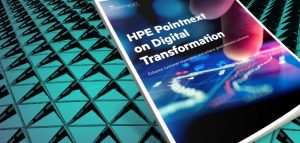 your IT infrastructure. We offer various options that allow you to choose the support that’s right for your IT, your budget, and your business.
your IT infrastructure. We offer various options that allow you to choose the support that’s right for your IT, your budget, and your business.
If you’re currently relying only on hardware warranties, why not take a look at the following operational services, and see how they can make a difference to your business.
- HPE Foundation Care is designed to keep your devices up and running, with HPE experts available to assist when there is a problem. Foundation Care reduces the amount of time your IT team needs to troubleshoot, monitor, and remediate your HPE servers, storage, networking products, and commercial operating systems and hypervisors, while maintaining required levels of availability within budget and resource limitations.
- HPE Proactive Care allows you to focus on your business by providing proactive, higher-value support that helps improve the overall availability and stability of your IT systems. Your entire infrastructure stack is supported with services designed to reduce the number of issues you experience and rapidly resolve problems should they occur.
- HPE Proactive Care Advanced (PCA) offers even more value with the addition of an assigned local Account Support Manager (ASM), providing access to specialist technical resources who can offer tailored advice and share best practices to help optimize your IT operations. Should you experience a complex incident or downtime, HPE will assign a Critical Event Manager (CEM) to manage, monitor, and coordinate the end-to-end process—providing prompt and effective engagement of additional expertise if required—to ensure the fastest possible problem resolution. With systems running smoothly, your staff can focus on new projects and strategic business initiatives.
Your devices are connected to HPE for 24×7 monitoring, providing you with a view of your IT from anywhere and on any device. Data received is scrutinized and a meaningful, tailored analysis provides proactive recommendations for firmware and patch updates. Plus when devices are connected, pre-failure alerts are sent to help you avoid outages. Calls can be automatically logged and parts dispatched to replace defective components—often before you’re even aware of the problem!
Benefits of Support Contracts
Renewing support allows your IT organization to effectively plan and budget, while ensuring your support coverage does not lapse, and helps to avoid late renewal charges. It also allows you to keep your systems up to date with current upgrades.
Another benefit is the consolidation of renewal dates. As your IT environment continues to grow, Zunesis can help make the renewal process simpler and easier by consolidating renewal contracts and expiration dates, reducing the number of contracts and administrative costs.
If you are a current Zunesis customer, once your initial support contract is due to expire, Zunesis will notify you within 30-90 days of support expiration, and, assist in helping you select a renewal contract to meet your current support requirements.
As the dedicated Support Specialist for Zunesis, I’d be happy to work with you to review your existing environment, and to develop a plan to ensure that you have the confidence your equipment has the protection necessary to survive in today’s demanding IT world.
Introducing ProLiant Gen10
The industry-leading success of HPE ProLiant stems in part from their ongoing commitment to providing a complete industry-standard server infrastructure that delivers innovation, quality, security and proven performance.
HPE ProLiant Gen10 is available in these families (outside of BladeSystem, Synergy, and Apollo platforms…but that’s a whole other discussion!):
- HPE ProLiant MicroServer
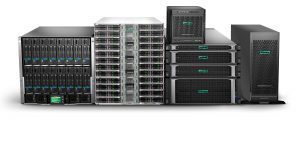
- HPE ProLiant Rack family – DL360, DL380, DL560 and DL580 servers – we will dive deeper into this family below as these are by far the most popular server sold.
- HPE ProLiant Tower family – ML110 and ML350 servers
HPE ProLiant Gen10 Rack Servers
The new HPE Gen10 rack servers are “The World’s Most Secure Industry Standard Servers”. This bold claim is founded on a unique silicon root of trust technology along with a myriad of other differentiating security technologies that only HPE offers.
The DL family of servers are the most flexible, reliable, and performance-optimized ProLiant rack servers. As HPE continues to provide industry-leading compute innovations, the ProLiant Gen10 rack portfolio, with flexible choices and versatile design, along with improved energy efficiencies, ultimately lowers TCO.
Integrated with a simplified, but comprehensive management suite and industry-leading support, the ProLiant Gen10 rack portfolio delivers a more reliable, fast, and secure infrastructure solution. It also helps increase IT staff productivity, and accelerates service delivery.
In addition, the rack portfolio is performance-optimized for multi-application workloads to significantly increase the speed of IT operations and enable IT to respond to business needs of any size, faster.
The HPE ProLiant Gen10 rack portfolio provides:
- Up to 27x faster checkpoint operations enabling significantly faster business operations and 20x reduction in database restart time preserving maximum uptime.
- Up to a 70 percent performance gain and 27 percent increase in cores
- Firmware anchored directly into the Silicon (Root of Trust), providing protection through the entire supply chain.
- 66 percent greater memory bandwidth increasing application performance for memory-intensive applications
Differentiating Innovations
Software-defined compute and converged infrastructure to run diverse workloads and applications across traditional and multi-cloud environments:
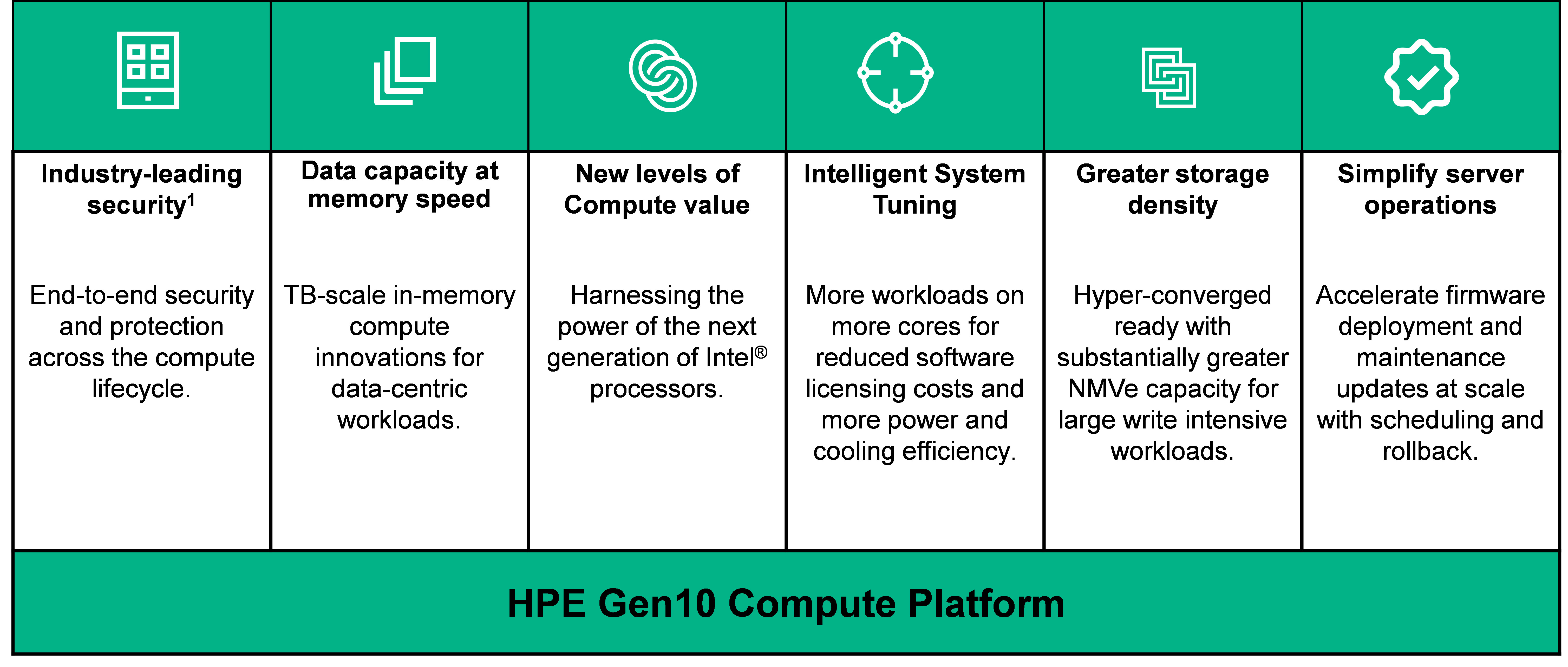
The bold claim that the ProLiant Gen 10 platform “The World’s Most Secure Industry Standard Servers” is founded on a unique silicon root of trust technology along with several other differentiating security technologies that HPE offers:
- Silicon root of trust—creates a digital fingerprint in the silicon and ensures the server will never boot with compromised firmware.
- Firmware threat detection—know on a daily basis whether firmware has been compromised. In the event of a breach, you can automatically recover to a known trusted state and quickly get the sever operational again.
- Server data security—implementing the highest level of security algorithms, known as CNSA-suite, you can keep your most confidential information within your server protected.
- Runtime Firmware Validation—Millions of lines of firmware code run before server operating system boots and with Runtime Firmware Validation, enabled by iLO Advanced Premium Security Edition, the server firmware is checked every 24 hours verifying validity and credibility of essential system firmware.
- Intel® Xeon® Processor Scalable Family—Next generation industry standard CPUs with faster processing, higher speed memory access, enhanced software-defined management and security.
- HPE Scalable Persistent Memory Non-Volatile DIMM (NVDIMM)—In-memory compute performance, accelerating applications for fast caching and storage, reduce transaction costs for latency-sensitive workloads, and deploy bigger, more affordable datasets to gain new insights from large memory pools.
- Intelligent System Tuning—Automate application performance tuning with core boosting and jitter smoothing technology. This new set of server tuning technologies enable you to dynamically configure server resources to match specific workloads for a more intelligent server environment.
- Hyper-Converged Ready Storage Density—Substantially greater NVMe capacity for large write intensive workloads needing advanced caching/tiering.
As an HPE Platinum Data Center partner, Zunesis can work with your organization to analyze your current environment. Whether you currently have ProLiant or other OEM x86 servers, we can develop a plan for migration to the ProLiant Gen 10 platform.
Zunesis can also provide installation, workload migration, and knowledge transfer services to make your migration as seamless as possible. We will provide a complete solution that is “Ready to Go”!
If your servers are more than 3 years old (for example, ProLiant Gen 8 or older), your organization will benefit from working with Zunesis and HPE on a Customer Connect discussion on a potential migration to Gen 10 architecture.
For details about HPE ProLiant Gen 10 servers, Zunesis Customer Connect Services, or more…contact your Zunesis Account Manager.
So, you think you’re ready for the jump to Office 365? You have done your research; licensing, cost-savings, administration, migration strategies, best practices, etc. You have weighed the costs of doing the migration in-house or choosing a vendor to assist. What’s next?
Ensuring a stress-free migration for you and your users will need 3 things:
- Smart planning
- Smart decisions
- Time
There are many things recommended to make the migration go smoothly. One key piece of smart planning is ensuring the Active Directory accounts, which are migrating to Office 365, are prepared for the migration. Successful directory synchronization between your on-premise directory and Office 365 requires that attributes are properly configured.
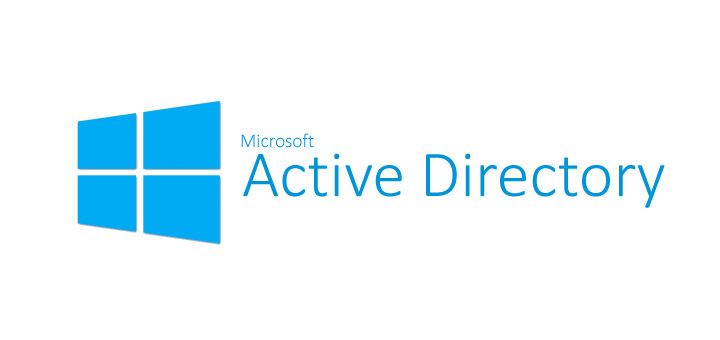 The following 5 tasks should be completed in Active Directory to plan for a smooth migration:
The following 5 tasks should be completed in Active Directory to plan for a smooth migration:
1. Active Directory Cleanup Tasks
Perform the following cleanup tasks in your on-premise directory:
-
- Ensure that each user has a valid and unique email address in the proxyAddress Field
- Remove Duplicates in the proxyAddress field
- Ensure each user has a valid and unique value for the userPrincipalName atrribute in the user’s user object
- For best use of the global address list (GAL), be sure the information in the following attributes is accurate:
- givenName
- surnamedisplayName
- Job Title
- Department
- Office
- Office Phone
- Mobile Phone
- Fax Number
- Street Address
- City
- State
- Zip
- Country
2. Directory Object and Attribute Preparation
Directory synchronization will fail if some of the Active Directory users have one or more duplicate attributes. If there are duplicate values, the first user with the value is synchronized. Subsequent users will not appear in Office 365. The following attributes should need prepared:
-
-
-
-
-
- Mail
- Attribute must be unique within the directory
- mailNickname (Exchange alias)
- Cannot begin with a period (.).
- Attribute must be unique within the directory
- proxyAddresses
- Can accept multiple values
- Value must not contain a space
- Attribute must be unique within the directory
- Invalid characters:
- [ \ “ | , / : < > + = ; ? * ]
- sAMAccountName
- Maximum characters: 20
- Attribute must be unique within the directory
- Invalid characters:
- [ \ “ | , / : < > + = ; ? * ]
- targetAddress
- Maximum characters: 255
- Value must not contain a space
- Attribute must be unique within the directory
- Invalid characters:
- [ \ “ | , / : < > + = ; ? * ]
- All SMTP addresses should comply with email messaging standards
- UserPrincipalName
- Must be in the Internet-style sign-in format: joe@contoso.com
- Invalid characters:
- [ \ “ | , / : < > + = ; ? * ]
- The @ character is required in each value
- The @ character cannot be the first character
- The user cannot end with a period (.), &, a space, or @
- Routable domains must be used, local or internal domains cannot be used
- Mail
-
-
-
-
3. Prepare the userPrincipalName Attribute
Active Directory is designed to allow the end users to sign in to the directory by using either sAMAccountName or userPrincipalName. End users can sign in to Office 365 by using the user principal name (UPN) of their work or school account. Directory synchronization attempts to create new users in Azure Active Directory by using the same UPN that’s in the on-premises directory. The UPN is formatted like an email address. In Office 365, the UPN is the default attribute that’s used to generate the email address. It’s easy to get userPrincipalName (on-premises and in Azure Active Directory) and the primary email address in proxyAddresses set to different values. When they are set to different values, there can be confusion for administrators and end users.
4. Add an Alternative UPN Suffix (if needed)
There may be a need to add an alternative UPN suffix to associate the user’s corporate credentials with the Office 365 environment. A UPN suffix is the part of a UPN to the right of the @ character. UPNs can contain letters, numbers, periods, dashes, and underscores, but no other types of characters.
5. Match the On-Premise UPN with Office 365 UPN
If directory synchronization is already setup, the user’s UPN for Office 365 may not match the user’s on-premise UPN that’s defined in the on-premise directory service. This can occur when a user was assigned a license before the domain was verified. To fix this, use PowerShell to fix duplicate UPN to update the user’s UPN to ensure that the Office 365 UPN matches the corporate user name and domain. When updating the UPN in the on-premise directory service and to have it synchronized with the Azure Active Directory identity, remove the user’s license in Office 365 prior to making the changes on-premise.
It is common for the on-premise domain to have a .local extension. In these cases, it is required to add an alternate UPN suffix to the .local domain which matches the email addresses of the users begin migrated. For example, if the local domain is contoso.local, but the email domain is contoso.com (i.e. users have email addresses of joe@contoso.com) an alternate UPN suffix is required on the local domain. In addition, the user’s primary UPN needs to be modified to reflect the UPN which needs to match the email domain.
IdFix Tool
Microsoft provides a tool to make this process easier, it is called the IdFix tool. In fact, Microsoft does not recommend making the above changes without the tool. IdFix can find errors, report on errors, and even allow to take actions to edit or remove the attributes. All prior to attempting synchronization.

Conclusion
These are the main values in Active Directory which need to be validated or modified to ensure a smooth transition to Office 365, and IdFix can assist in identifying these values.
Over the years, we have been asked to help our customers physically move all or parts of their IT Infrastructure. Some of these moves were within the same building, some across the street or campus, and others across the country. The move could be between on-premise data centers or it could be from an on-premise data center to a co-location facility. Truth is, in today’s Cloud-minded world, we are now being asked to move all or part of an IT Infrastructure from on-premise or co-location facilities to the Cloud. In all cases we can help. However, the focus of this post is about moving your physical infrastructure from one location to another. Consider this post a “lessons learned” from our experiences and those of our clients.
Reasons for performing a physical move are many. Perhaps your company is relocating to another building, you have outgrown your current data center, or perhaps you have consolidated and no longer need the space you once did. Whatever the reason, moving your physical IT Infrastructure deserves a lot of planning and preparation before the first wire tie is cut or the first network cable is unplugged. All too often, we find far too little time put into the planning phase and this can lead to a much longer maintenance window then expected at best or a complete catastrophe at worst.
Where to begin?
We like to start by taking an inventory of the equipment to be moved. If you already have an inventory, it is worthwhile to check your inventory against what’s actually in the rack(s). Equipment gets changed over the years and the changes aren’t always documented. The inventory should include description, model, serial number, dimensions, and weight. The dimensions and weight are used when requesting proposals from moving companies.
For each piece of equipment in the inventory, it is important to understand what support and/or warranty is active. Does the manufacturer require a move certification process to maintain the warranty or support? What information will the manufacturer require to document the equipment’s new location? Contacting the manufacturers and moving companies early in the planning stage will avoid missed deadlines and unsupported equipment.
You may also want to capture power and cooling specifications for each piece of equipment on the inventory. Whether you are moving to your own facility or to a co-location facility, understanding the power and cooling requirements is essential. For companies moving to their own facilities, it will be extremely important to get the power and cooling requirements calculated and communicated to the HVAC engineers and Electricians early in the process.
After you collect the basic information, create or review a current logical diagram of the infrastructure so you can visualize how equipment is connected. Use this diagram as a basis to document IP Addressing, Application dependencies, etc. The information documented in this step will be essential to developing the shutdown and startup processes. This information will help you foresee areas where you may have trouble integrating into the new location.
Using the inventory and logical diagram for your existing environment, you can develop a diagram for what your destination should look like. This is also the point at which you should contact your internet service providers, phone providers, cable installers and the facilities and networking teams for the co-location facilities. Again, contacting these services providers early in the process is critical to a successful move. Internet providers alone could require anywhere from 30 to 90 days to switch your service.
So, to start any move you should:
- Understand what you have (model, serial number, specifications)
- Be clear about the level of warranty/support and manufacturer requirements for moving the equipment.
- Create a logical diagram for the existing environment and for the new environment
- Contact the appropriate service providers:
- Moving Companies
- Manufacturers
- Cable Installers
- Electricians
- Internet Providers
- HVAC Companies
While these beginning steps may all sound obvious, they are not always given the time and attention they deserve. Trust me, being attentive to the details at this stage will be time well spent. Your chances of a successful, less stressful move will be greatly improved by careful preparation.
What next?
 So, you’ve documented what you have and you’ve notified the appropriate services providers, while you’re waiting on their responses, it’s time to start building the plan. As you engage with each of the services providers your plan may need modification, but, that shouldn’t stop you from getting started.
So, you’ve documented what you have and you’ve notified the appropriate services providers, while you’re waiting on their responses, it’s time to start building the plan. As you engage with each of the services providers your plan may need modification, but, that shouldn’t stop you from getting started.
First, using the inventory and logical drawings produced in the beginning, you should build a diagram for how equipment will be laid out in the new rack(s). This will expedite the unpacking and installation after your equipment is delivered to the new location. With a clear diagram for what gets installed and where, you won’t need to figure that out the day of the move.
The rest of your plan should include the following:
- A list of individuals who will be involved in the move, including the various services providers. This list should include their roles and contact information. Don’t forget to include the names and contact information for support personnel from the hardware and software providers.
- If your IP Addressing is going to change, include a list of equipment with the existing IP Addressing displayed next to the new IP Addressing. If there are no changes, you still need a list of IP Addresses and what equipment/devices they belong to.
- Make sure you have documented all usernames and passwords to get into the equipment for shutdown and startup.
- Make a list of device configuration files that need to be backed up or documented. Understand how to restore these configurations in the event of the need to replace the equipment or if a configuration is lost in some other way.
- Review your data backups and determine how you will provide for a current backup in case of data loss. Make sure you have a documented the process for restoring your data backups.
- Develop a checklist for the shutdown process and the startup process.
- Include an item on your plan for checking in the equipment based on the inventory list.
- Develop a checklist for testing devices once they are powered up at the new location.
- Develop a checklist for error log review prior to putting the equipment back into Production.
- Create a timeline that includes:
- Date to perform final data backup
- Date to backup configuration files
- Date to check events and errors prior to the move
- Time to troubleshoot potential errors found during pre-move event log review
- Dates by which each service provider affirms their readiness
- Date for walk-thru of the destination site
- Date for pre-move meeting for the team to discuss the move process
- Date and time for shutdown and equipment to be uninstalled
- Date and time for movers to be onsite at existing facility and projected time for their arrival at the new facility
- Estimated time to receive the new equipment, get it installed and perform startup
- Estimated time by which the equipment will be in production
While the time estimates may not be exact, they are important here as they can provide early indications of whether you are ahead of or behind schedule.
- Create a communication plan for notifying users of the move. The communication should include outage window, what to expect before and after the move and who to contact for questions.
- Create a contingency plan for some of the major obstacles such as, internet service delay, damaged equipment, etc. The best planned move can still run into issues, but, if you’ve already run through some of the likely scenarios, you won’t be as panicked if they happen.
Simple as that
I know, this seems like a lot of work. But all the preparation will reduce your stress overall and, most importantly, will get your systems back into Production sooner and with less disruption.
Download our Data Center Moving Checklist for your next move!




